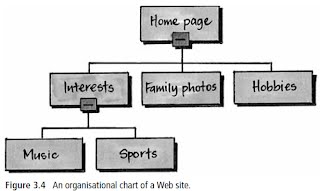If the feasibility study recommends a new system, a more detailed analysis is required. The existing system is investigated in greater depth to ensure all current operations and problems are understood. The systems analyst must also further clarify the needs of the new system. - This requires more data to be gathered using interviews, surveys, observations and measurements.
- When the data is collected it must be organised and analysed.
- It is necessary to understand the flow of data through the system and how the data is processed within the system.
- A range of tools are used for this purpose, such as data flow diagrams, context diagrams and system flow charts. These tools are described in the next section.
Organisational charts are a good way of understanding a system. They show the intended structure of a solution
using different levels.
The main module is at the top level and it is refined into lower levels as more detail is required. Control
passes from the top level down through to the lower levels. Each module contains a single entry and a single exit. Analysis Report When the detailed analysis is completed, an analysis report is written. - It provides more detail than the feasibility study.
- The analysis report provides a basis for further development.
- The details of the new system are presented with recommendations for design, implementation and maintenance.
- The analysis report contains design specifications for the next stage.
- These specifications give the general hardware configuration of the new system and designs for both input and output.
- The analysis report also contains a more detailed costing and schedule for the new system
| 
